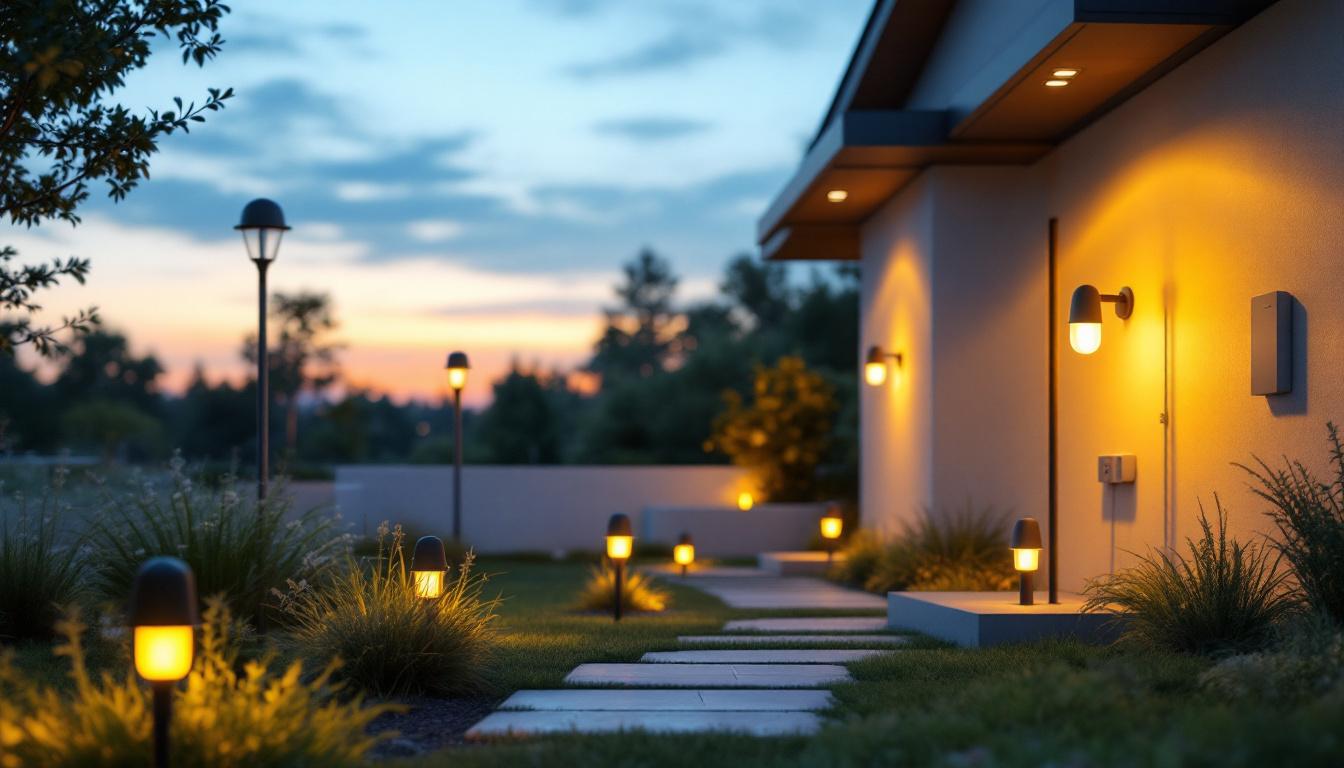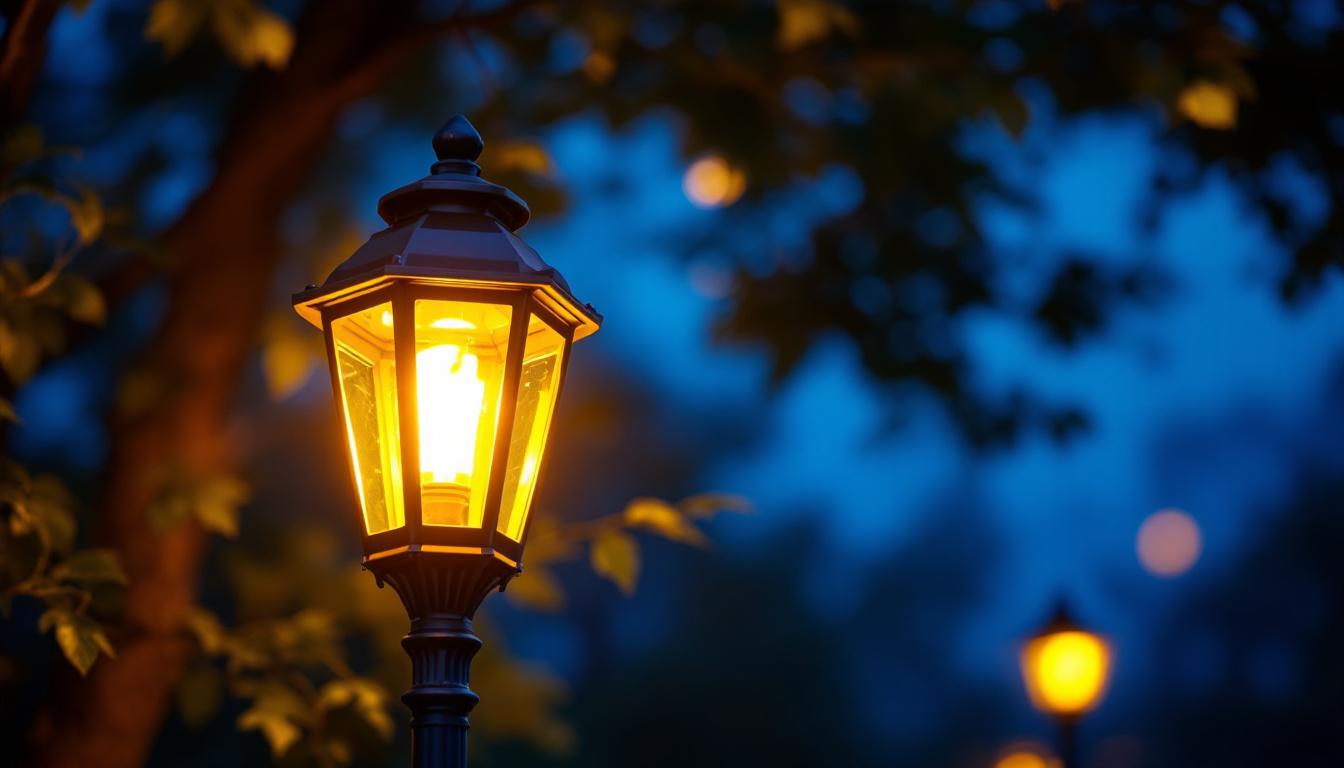
In the world of outdoor lighting, the use of exterior plug-in lights has gained significant popularity among homeowners and contractors alike. These versatile fixtures offer an array of benefits, from ease of installation to flexibility in design. However, with these advantages come potential pitfalls that can lead to costly mistakes and unsatisfactory results. This guide aims to provide lighting contractors with essential insights and practical tips for successfully navigating the world of exterior plug-in lights.
Exterior plug-in lights are designed for outdoor use and typically feature weather-resistant materials and construction. They can be easily connected to standard electrical outlets, making them an attractive option for those looking to enhance their outdoor spaces without the need for extensive wiring or installation work.
One of the primary advantages of exterior plug-in lights is their ease of installation. Unlike hardwired lighting systems, which often require professional installation and adherence to local electrical codes, plug-in lights can be set up quickly and without specialized skills. This feature makes them ideal for DIY enthusiasts and homeowners looking to make quick enhancements to their outdoor areas.
In addition to their straightforward installation, exterior plug-in lights offer flexibility in terms of design and placement. They can be easily moved or repositioned, allowing for seasonal changes or adjustments based on landscaping modifications. This adaptability is particularly beneficial for contractors who may be working on temporary installations or projects that require frequent updates. Moreover, many models come with adjustable brightness settings and color options, allowing users to customize the lighting to suit different occasions, from cozy gatherings to festive celebrations.
Exterior plug-in lights can be utilized in various applications, ranging from illuminating pathways and driveways to enhancing the ambiance of patios and decks. They are also popular for holiday lighting displays, where the ability to easily connect and disconnect lights is a significant advantage.
Furthermore, these lights can be used in commercial settings, such as outdoor dining areas, event spaces, and retail environments, where attractive lighting can enhance the overall customer experience. Understanding the diverse applications of exterior plug-in lights can help contractors offer tailored solutions to their clients. For instance, restaurants can create inviting atmospheres with string lights or lanterns that not only provide illumination but also contribute to the overall aesthetic appeal, encouraging patrons to linger longer. Additionally, event planners often use these lights to define spaces, highlight features, or create themed environments, showcasing their versatility in both residential and commercial settings.
While exterior plug-in lights offer numerous benefits, there are several pitfalls that contractors should be aware of to avoid complications during installation and use. Recognizing these issues early can save time, money, and frustration in the long run.
One of the most critical aspects of working with exterior plug-in lights is selecting the right products for the specific application. Not all plug-in lights are created equal; some are designed for temporary use, while others are built for long-term outdoor exposure. Contractors should carefully evaluate the materials, weather resistance, and intended use of each product to ensure it meets the project’s requirements.
Additionally, it is essential to consider the wattage and energy efficiency of the lights being installed. Overloading a circuit can lead to tripped breakers or even electrical fires, making it crucial to choose lights that are compatible with the available power supply. Energy-efficient options, such as LED lights, not only reduce electricity costs but also have a longer lifespan, which can be a significant selling point for clients looking for sustainable solutions.
Even though exterior plug-in lights are generally easy to install, there are still challenges that contractors may face. For instance, ensuring that the electrical outlets used are weatherproof and suitable for outdoor use is vital. Failing to do so can result in electrical hazards and damage to the lighting fixtures. Contractors should also be aware of local electrical codes and regulations, which may dictate specific requirements for outdoor installations to ensure safety and compliance.
Moreover, securing the lights properly to prevent them from being knocked over or damaged by wind or other outdoor elements is essential. Using appropriate mounting hardware and techniques can mitigate these risks and enhance the longevity of the installation. Additionally, considering the layout and positioning of the lights can create a more aesthetically pleasing effect while maximizing illumination. Thoughtful placement can also minimize the risk of shadows or dark spots, ensuring that the area is well-lit and safe for use.
Maintenance is another crucial aspect of working with exterior plug-in lights. While these fixtures may require less upkeep than hardwired systems, they are not entirely maintenance-free. Regular checks for wear and tear, as well as cleaning to remove dirt and debris, can help ensure optimal performance and appearance. It’s advisable to inspect connections and cords for any signs of fraying or damage, as these can pose safety risks if left unaddressed.
Contractors should also educate clients on the importance of seasonal maintenance, such as disconnecting lights during severe weather or winter months to prevent damage. Providing this information can enhance client satisfaction and reduce the likelihood of service calls for repairs. Additionally, advising clients on the best practices for bulb replacement and the benefits of using timers or smart technology can further improve the efficiency and convenience of their lighting systems. By fostering a proactive approach to maintenance, contractors can build lasting relationships with clients and establish a reputation for quality service in outdoor lighting installations.
To ensure a successful installation of exterior plug-in lights, contractors should follow a series of best practices that promote safety, functionality, and aesthetic appeal. These practices can help streamline the installation process and lead to better outcomes for clients.
Before beginning the installation, it is essential to plan the layout of the lighting design carefully. This involves considering the areas that require illumination, the desired ambiance, and the overall landscape design. Taking the time to sketch out a plan can help identify potential challenges and ensure that all aspects of the project are considered.
Additionally, contractors should take into account the location of electrical outlets and the distance between them. This information will guide the selection of lights and help determine the best placement for optimal coverage and effectiveness.
Using high-quality accessories, such as extension cords, timers, and connectors, can significantly enhance the performance and safety of exterior plug-in lights. Contractors should opt for products that are rated for outdoor use and designed to withstand the elements. This attention to detail can prevent future issues and ensure a reliable lighting solution for clients.
Timers and smart plugs can also add convenience, allowing homeowners to automate their lighting schedules and improve energy efficiency. Educating clients about these options can enhance their overall satisfaction with the installation.
After installation, it is crucial to test the lights to ensure they are functioning correctly. This step includes checking for proper operation, adjusting the angle of fixtures for optimal illumination, and ensuring that all connections are secure. Taking the time to make these adjustments can prevent future headaches and ensure that the lighting meets the client’s expectations.
Effective communication and education are vital components of a successful lighting installation. Contractors should strive to keep clients informed throughout the process and provide them with the necessary knowledge to maintain their exterior plug-in lights.
After installation, contractors should provide clients with clear instructions on how to operate and maintain their new lighting system. This may include information on adjusting timers, changing bulbs, and troubleshooting common issues. Providing written materials or digital resources can help clients feel more confident in managing their outdoor lighting.
Additionally, contractors should encourage clients to reach out with any questions or concerns they may have after the installation. Open lines of communication can lead to increased satisfaction and foster long-term relationships.
Safety is paramount when it comes to outdoor lighting. Contractors should emphasize the importance of using weatherproof outlets, securing cords to prevent tripping hazards, and disconnecting lights during inclement weather. Educating clients about these safety considerations can help prevent accidents and promote responsible usage of exterior plug-in lights.
The landscape of outdoor lighting is constantly evolving, with new technologies and trends emerging regularly. Staying informed about these developments can help contractors remain competitive and offer clients the latest solutions.
As energy efficiency becomes increasingly important, many manufacturers are focusing on creating exterior plug-in lights that utilize LED technology. These lights consume significantly less energy than traditional incandescent bulbs, offering both cost savings and environmental benefits. Contractors should be prepared to recommend energy-efficient options to clients, showcasing the long-term advantages of these products.
Additionally, the trend towards sustainable lighting solutions is gaining momentum. Many consumers are now seeking products made from eco-friendly materials or those that incorporate solar technology. Understanding these trends can help contractors position themselves as knowledgeable and forward-thinking professionals in the industry.
The rise of smart home technology has also influenced the outdoor lighting market. Many exterior plug-in lights now come equipped with smart features, allowing homeowners to control their lighting remotely via smartphone apps or voice-activated devices. Contractors should familiarize themselves with these products and be prepared to offer clients smart lighting solutions that enhance convenience and functionality.
Exterior plug-in lights present a wealth of opportunities for lighting contractors, providing flexibility, ease of installation, and a range of applications. However, navigating the potential pitfalls requires careful planning, product selection, and effective communication with clients. By understanding the benefits and challenges associated with these fixtures, contractors can deliver successful installations that meet client needs and expectations.
As the industry continues to evolve, staying informed about trends and innovations will be essential for contractors looking to remain competitive. By embracing energy-efficient solutions, smart technology, and sustainable practices, lighting professionals can position themselves as leaders in the outdoor lighting market. Ultimately, the goal is to create beautiful, functional, and safe outdoor spaces that enhance the quality of life for homeowners and businesses alike.
Ready to elevate your outdoor lighting projects with the best in class solutions? Look no further than LumenWholesale. Our extensive range of spec-grade lighting products is designed to meet the demands of any exterior plug-in light installation. With unbeatable wholesale prices and the convenience of free shipping on bulk orders, you can ensure your projects shine without breaking the bank. Don’t compromise on quality or value—choose LumenWholesale for reliable, high-performance lighting that will impress your clients and enhance any outdoor space. Discover the perfect blend of quality, affordability, and convenience today by visiting our selection at Wholesale Lighting at the Best Value.

Discover essential tips and common pitfalls to avoid when using LED lights for plant growth.

Discover the answers to lighting contractors’ most common questions about solar outdoor lanterns.

Discover how surface mount fixtures can revolutionize your lighting projects.

Discover expert tips and innovative ideas for lighting contractors in our guide to lamp post lanterns.